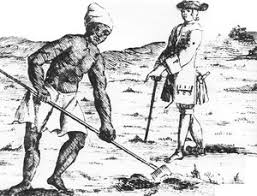Slavery has a complex and painful history in the United States, particularly in the Southern states, where it became an entrenched institution. This article explores why slaves were brought to the South, the timeline of their arrival, and the underlying factors that made slavery a unique aspect of Southern culture and economy.
Why Were Slaves Brought to the South?
Slaves were brought to the South primarily to provide labor for agricultural enterprises, particularly in the cultivation of cash crops like cotton, tobacco, and sugar. The agrarian economy of the South required a substantial workforce to maintain productivity and profitability. By utilizing enslaved Africans, plantation owners were able to maximize their profits while minimizing labor costs. The economic reliance on slave labor led to the establishment of a social hierarchy that favored white landowners and systematically oppressed enslaved people. This practice was rooted in a belief that African people were suited for enslavement due to their perceived racial inferiority, a notion that would have devastating consequences for generations.When Were Slaves First Brought to the South?
The first enslaved Africans were brought to the South in 1619, marking a significant moment in American history. A Dutch ship transported approximately 20 Africans to the Jamestown colony in Virginia. Initially, these individuals were treated as indentured servants, but as the demand for labor grew, a system of lifetime slavery began to take shape. The transatlantic slave trade continued for over two centuries, with millions of Africans forcibly transported to the Americas. By the time the trade was officially abolished in the United States in 1808, a large population of enslaved people had already settled in Southern states.What Caused Slavery to Become the South's Peculiar Institution?
Slavery evolved into what is known as the South's "peculiar institution" due to several interrelated factors:- Economic Dependence on Agriculture: The Southern economy was largely agricultural, relying heavily on labor-intensive crops. Slavery provided a stable and cheap labor force that was crucial for the production of cotton, which became known as "King Cotton" in the 19th century.
- Legal and Social Frameworks: Southern states implemented laws that institutionalized slavery, creating a legal framework that defined the status of enslaved people as property rather than individuals with rights. This legal framework helped to entrench slavery within the society and economy.
- Racial Justifications: Over time, racial ideologies emerged to justify the practice of slavery. These ideologies perpetuated the belief that African people were inferior and suited for servitude, further solidifying the institution of slavery as a social norm in the South.
What Are the Three Main Causes of Slavery?
The causes of slavery can be broadly categorized into three main areas:- Economic Factors: The demand for labor in agricultural production, particularly in the South, was the primary driving force behind the establishment of slavery. Plantation owners sought a workforce that would enable them to maximize profits from cash crops.
- Historical Context: Slavery has existed in various forms throughout history, predating the arrival of Europeans in Africa. The transatlantic slave trade was an extension of existing practices and was fueled by European colonialism and the demand for labor in the Americas.
- Social and Racial Dynamics: The emergence of racial hierarchies that deemed African people as inferior created a societal acceptance of slavery. This racial dynamic was bolstered by pseudo-scientific theories and cultural beliefs that justified the enslavement of Africans.
